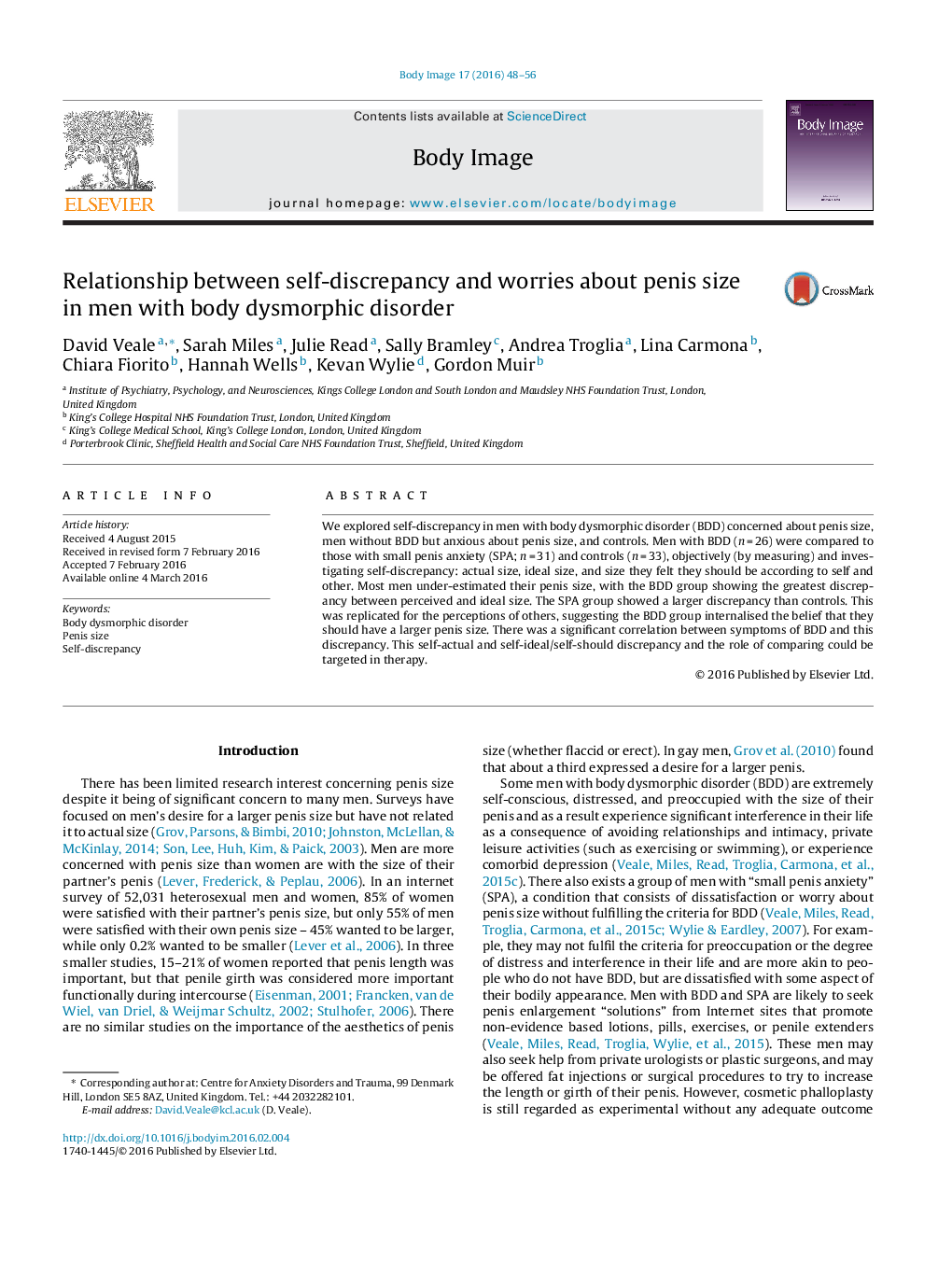| Article ID | Journal | Published Year | Pages | File Type |
|---|---|---|---|---|
| 902648 | Body Image | 2016 | 9 Pages |
•Determining objective, perceived actual, ideal, and should penis size on a nomogram.•Discrepancy between perceived and ideal size was correlated with symptoms of BDD.•Men with BDD have greater discrepancies compared to controls.•Self-discrepancy in penis size may be a helpful target in therapy.
We explored self-discrepancy in men with body dysmorphic disorder (BDD) concerned about penis size, men without BDD but anxious about penis size, and controls. Men with BDD (n = 26) were compared to those with small penis anxiety (SPA; n = 31) and controls (n = 33), objectively (by measuring) and investigating self-discrepancy: actual size, ideal size, and size they felt they should be according to self and other. Most men under-estimated their penis size, with the BDD group showing the greatest discrepancy between perceived and ideal size. The SPA group showed a larger discrepancy than controls. This was replicated for the perceptions of others, suggesting the BDD group internalised the belief that they should have a larger penis size. There was a significant correlation between symptoms of BDD and this discrepancy. This self-actual and self-ideal/self-should discrepancy and the role of comparing could be targeted in therapy.
